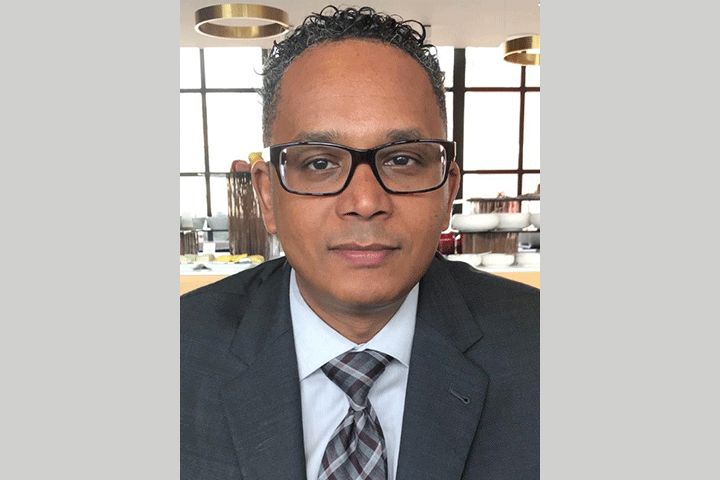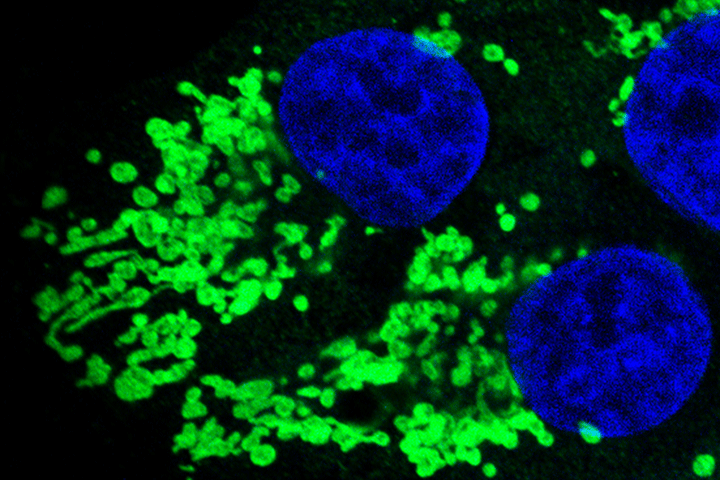New Study Aims to Reduce Recurrence Risk for Select Patients

Abramson Cancer Center
PARP inhibitors are having a moment.
Just last year, research showed that a one-year treatment regimen with a PARP inhibitor called olaparib reduced the risk of breast cancer recurrence (and progression to secondary breast cancer) in people with high-risk, early-stage disease with a BRCA gene mutation. The trial, called OlympiA, showed that people who received olaparib had a 42 percent reduction in risk of breast cancer recurrence compared to those who received a placebo. Nearly 86 percent of those given olaparib for a year after treatment saw no return, relapse, or spread of their breast cancer three years later, compared with 77.1 percent who were taking a placebo.
Now, researchers want to see if those kinds of results can be replicated for BRCA- or PALB2-positive patients with early-stage pancreatic cancer, explains medical oncologist Kim A. Reiss, M.D., the lead investigator of a multisite trial called APOLLO, which is designed in a similar manner to the OlympiA trial.
“PARP inhibitors have been shown to be effective against a variety of BRCA-mutated cancers in the incurable setting, including pancreatic cancer,” says Reiss, an Assistant Professor of Medicine at the Abramson Cancer Center of the University of Pennsylvania. “Now we want to see if we can use this class of drug to improve the chance of cure in patients with BRCA or PALB2 mutations and early stage disease.”
Some of that data comes from the POLO trial. This phase III study tested olaparib compared to placebo in patients with germline BRCA mutations and platinum-sensitive, metastatic pancreatic cancer, Reiss explains. POLO demonstrated that patients had significantly longer progression-free survival with maintenance olaparib than with a placebo. A second, single-arm phase II study led by Reiss and her colleagues demonstrated that maintenance rucaparib (another PARP inhibitor) was effective in those with germline BRCA mutations, but also those with PALB2 and somatic mutations. In this second study, patients had a six-month progression-free survival of 59.5 percent. The overall response rate of 41.7 percent included patients with germline and somatic BRCA1/2 mutations and those with PALB2 variants. Two-thirds of patients obtained disease control with the PARP inhibitor.
These two studies in pancreatic cancer coupled with PARP inhibitor data in other tumor types formed the rationale for the APOLLO trial. When the OlympiA data was presented, this provided even more fuel to the fire, Reiss says. “We want to know: Can we do the same thing for pancreatic cancer that OlympiA did for breast cancer?”
How PARP Inhibitors Work
PARP inhibitors have been approved for select patients in the treatment of breast cancer, ovarian cancer, pancreatic cancer, peritoneal cancer, and prostate cancer. The oral medications are called targeted treatments, designed to exploit a specific weakness in malignant cells, while leaving healthy cells (mostly) alone. While the BRCA enzyme fixes double-stranded DNA breaks within cells, PARP repairs single-stranded DNA breaks, explains Reiss. In the setting of a PARP inhibitor, single- stranded breaks go unrepaired and degenerate further into double- stranded DNA breaks. In tumors that have lost the BRCA enzyme—as commonly occurs if there is a germline BRCA mutation—these double-stranded breaks cannot be repaired and the cancer cell dies. PARP inhibitors are selectively toxic to tumor cells because in a human with a BRCA mutation, the healthy cells still carry a second, functional copy of the gene and therefore can create adequate BRCA protein.
About the APOLLO Trial
The APOLLO trial is a randomized study of olaparib or placebo in patients with surgically removed pancreatic cancer who have a BRCA1, BRCA2, or PALB2 mutation and have completed all other standard therapy such as chemotherapy and/or radiation. For every two patients who receive olaparib, one will receive the placebo, and treatment lasts one year. The standard approach for this patient population is monitoring only. The goal of the study is to determine whether the addition of olaparib will reduce or delay the recurrence of pancreatic cancer.
When pancreatic cancer is detected at an early stage and surgical removal of the tumor is possible, the five-year survival rate is 39 percent, according to the American Society of Clinical Oncology. “Because pancreatic cancer is tough to diagnose, and mostly diagnosed in later stages, too few people have the opportunity for surgery,” explains Reiss. “But even among those that do get surgery, the recurrence rate is too high and clearly we need to improve on that.”
The multisite trial, which is run by the cooperative ECOG-ACRIN Cancer Research Group, will include 152 patients; its goal is to compare the traditional approach of observation after completing treatment to a one-year regimen of olaparib taken orally twice a day. The patient cohort will be divided into two groups, with Group 1 receiving olaparib (102 patients) and Group 2 receiving a placebo (50 patients). The study is double blind, meaning that neither the patient nor the treating physician will know which group the patient is in.
The trial is expected to run about four to five years, says Reiss, given that this is a rare population of patients. And although the number of pancreatic cancer patients who are deemed surgery-eligible at the time of diagnosis is small, it bears pointing out that finding surgery-eligible patients who carry a DNA-repair mechanism mutation like BRCA or PALB2 is going to be “a little tougher,” adds Reiss, citing that only about five to eight percent of pancreatic cancer patients carry these mutations.
Nonetheless, she and her colleagues are up for the challenge. “Even with the very best treatments, people who get surgery have a high risk of recurrence,” she explains. “Though this particular cohort of surgery-eligible patients with a repair-deficiency mutation is small, PARP inhibitor therapy may be an incredible benefit to them. We hope this increases the chance for them to have a normal lifespan. That is exciting.”
The trial is designed to allow as many people as possible to enroll since eligibility requirements are slightly less stringent than on traditional trials. “We only need 152 patients for this, and I am hopeful we will get there,” says Reiss. “We’ve tried to make it as easy as possible for people.” And if the study shows efficacy, there probably “won’t be a need for a larger study,” she adds. “If the study is positive, we hope it would become a guideline and change the standard of care for this patient population.”
She also emphasizes the need for genetic testing for all pancreatic cancer patients. “Every day we are learning more about how important genetic testing can be for patients,” she says. “And that translates to the ongoing work in designing treatments that are more effective in targeting mutations. That’s how we are going to make a difference in treating this disease.”






